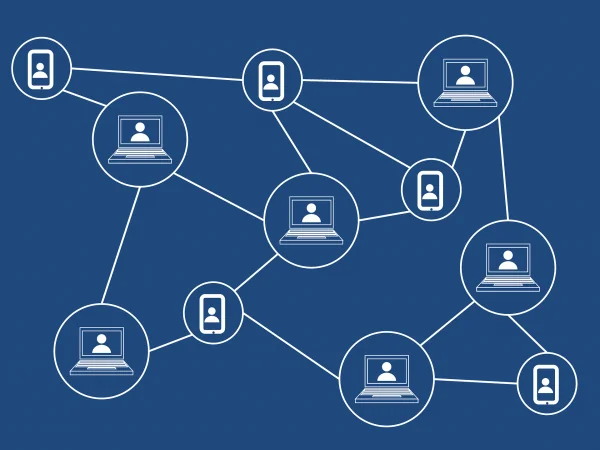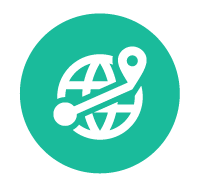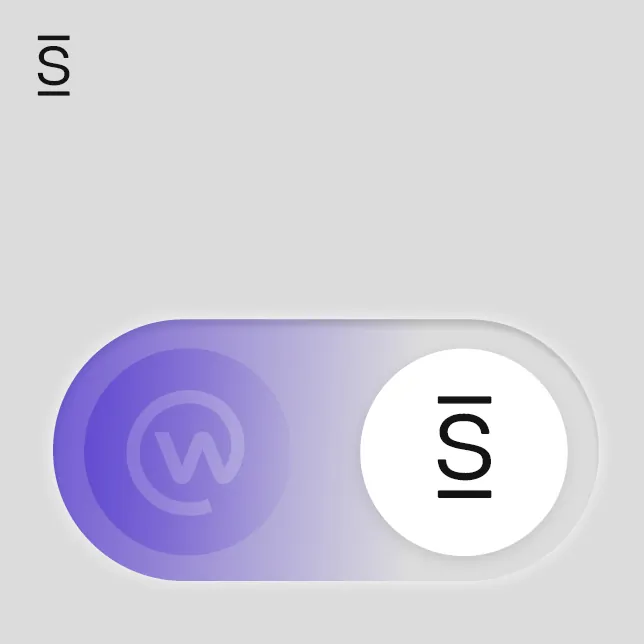Last week, we discussed the challenges of matching the organizations with a specific platform that best supports their needs in Bridging the Gap Between Concept and Solution Through Technology: Defining the Problem. If you missed it, you might want to check it out first. We went over our 3-step process from managing the mapping of your requirements to selecting the vendor of your choice. Step 1 is defining the problem you want to solve and how an employee intranet can help your organization achieve its goals. Next, it’s time for Step 2 – detailing your technology needs.
Step 2: Detail The Technology Needs
Once you have defined the specific problems your new intranet platform is intended to solve, create a comprehensive list of the features you want and the technical requirements you need to meet. This detailed wish list will make it possible to select between similar options based on a clearly defined list of must-haves.
- Desktop & mobile accessibility

- Important End-User Experience Features
- Intelligent Platform Capabilities
- Administration and Governance
- Integrations
1. Desktop & mobile accessibility
According to IDC, 72% of the U.S. workforce will be mobile by 2020. In addition to web-based access that connects your entire digital workplace, ensuring your intranet provides access through a mobile device will drive adoption and minimize training needs on the part of your users.
Seamless User Experience: Does the vendor provide a seamless experience across the web and mobile? Ensuring it does will increase adoption across your entire organization, as well as minimize additional training needs.
Multitenancy
While most SaaS-based platforms are multi-tenant, some older platforms still rely on an on-premise architecture migrated to the Cloud. Multi-tenancy permits cost savings and performance improvements that are greater than the basic economies of scale achievable from consolidating IT resources into a single operation. This is the standard for today’s SaaS platforms.
Native app on most popular mobile platforms
With Android and iOS controlling most of the market today, selecting a platform that provides a native experience enables you to leverage the innovative features Apple and Google offer to their users. This provides an intuitive experience for your employees, which minimizes the need for training requirements and increases adoption.
Responsive design
If the platform does not provide native mobile apps, ensure that at a minimum, the application is responsive. For example, validate that it will render properly on a mobile device. Without this capability, your intranet will not be functional on mobile devices.
100% SaaS
Is the platform fully deployed on the Cloud or is this is an on-premise or hybrid offering? Asking the right questions will help you avoid surprises down the road.

2. Important End-User Experience Features
Your intranet’s user experience is critical to driving adoption across your workforce. With multiple generations at work, from baby boomers to Generation Z, providing a user experience that can satisfy the divergent needs of several generations is critical.
The widespread popularity of social media platforms such as Facebook, Twitter, and Instagram has set the bar high. Employees increasingly expect the same intuitive user experience in their business applications.
Intuitive User Experience
Employees and managers expect their intranet to save time, and any platform that requires complicated training is unlikely to see much use. To ensure that the intranet becomes a central communication hub, it must offer an intuitive user experience.
Search Functionality
The ability to find what you need quickly is at the core of any intranet platform. However, the capabilities of each platform vary greatly, both in terms of features and performance. At a minimum, ensure the platform you select can search across all data, including text, metadata, tags, pages, media files, and other registered information. More advanced capabilities include predictive search, ranking results based on relevance, and the ability for users to define sort order and relevance criteria.
Social/Collaboration Tools
Organizations are increasingly evolving when it comes to the way work gets done, and enterprise social networks and collaboration capabilities are becoming a necessity. Evaluate whether features such as following people, pages, and groups; threaded commenting; likes and shares; content tagging; file-sharing; collaborative authoring; cross-posting, live chat; and external sharing are available. If a platform’s features are limited, explore integration options with existing collaboration tools and platforms such as Slack, Yammer, or Salesforce Chatter.
Newsletters/Emails
While newsletter and email features are not common for intranet platforms, some of the leading options offer capabilities only previously available to pure-play platforms such as Poppulo/Newsweaver and PoliteMail. Having the ability to communicate to your organization through one platform, regardless of the channel, improves overall efficiency and increases your ability to measure the impact of your programs.
Personalization
The ability of employees to personalize their experience is critical to adoption. For example, can your employees customize their views to highlight people and places they want to be kept updated on, and news that is relevant to their role? Advanced platforms also include alert and notification features to keep employees up to date.
Directory
One of the key use cases of any modern intranet is your employees’ ability to find and connect with their colleagues. Does your platform provide an intuitive directory? It should go beyond the basics of name, contact information, and department, allowing users to define their skills and connect with each other. Furthermore, if your organization already uses a Human Capital Management (HCM) system, does the intranet provide integration so you do not have to duplicate this information?
Company-wide and group-specific calendars allow your employees to seamlessly create and share events that are of interest to them. From company-wide, all-hands meetings to department-specific holiday parties, your employees’ ability to discover, create, and easily import these to their calendars enhances the user experience.
Multi-Language Support
This feature is primarily relevant to international companies, but there are certainly benefits for businesses exclusively located in the US. Even the most skilled English speakers may consider another language their primary form of communication, and you can increase employee engagement with multi-language support.

3. Intelligent Platform Capabilities
Underlying intranet technology has come along way since SharePoint was created in the nineties and has even advanced far beyond the early enterprise social networking solutions. Today, with technical advances in artificial intelligence (AI), machine learning, and other data science approaches, the underlying intranet platform technology is smarter and shows even more promise in the coming years.
Smart Search
Even with the most well-planned user experiences, most employees default to search capabilities to navigate content. It’s important for the underlying search technology to have intelligent search algorithms beyond keywords and metatags. Otherwise, the internet’s credibility will quickly be tarnished and adoption will suffer.
Contextual Intelligence
Data science is paving the way for a new kind of contextual experience. Systems are beginning to get smarter at serving up appropriate content based on a variety of factors including: employee tenure, organizational structure, time of year, social connections, and previous interests. Given the infancy of AI in intranet platforms, it’s equally important to align with a vendor’s vision and understanding of emerging technologies.
4. Administration and Governance
Even today, many modern intranet platforms require significant IT support and training before employees are able to administer the platform. As a result, requests are delayed in an IT team bottleneck. Best-in-class platforms require minimal IT support, instead allowing your department administrators (e.g. Communications, HR, IT, Sales) to manage their sections of the intranet without IT support.
Ensuring that departmental administrators can access and maintain their sections increases employee productivity, as well as improves employee engagement and encourages adoption of the intranet.
Flexibility
Does the intranet platform allow administrators to define the processes and workflows applicable to your organization? Examples include defining roles and permissions (e.g. who can author what type of content), branding, and approval workflows. Ideally, the intranet platform should adapt to your processes, not the other way around.
Branding and Design
The look and feel of a company’s intranet instantly communicates aspects of company culture to those who are new to the organization. Tools must offer an ability to customize visuals, so employees immediately have a feel for whether the company is formal or informal, elegant or casual, modern or traditional, and similar.
Content Management System (CMS)
Advanced intranet platforms typically support both short and long-form content in addition to rich media (e.g. photos, videos and audio files) and other file formats. The capabilities of the underlying CMS will determine whether your departments can manage their own content. If you want to empower your organization’s leaders to manage their own content, look for an intranet CMS that offers “What-You-See-Is-What-You-Get” (WYSIWYG) capabilities. You may also wish to look at content expiration and archiving features that ensure your intranet does not become clogged with outdated and obsolete material. Finally, global organizations often determine that multi-language support and content history is critical.
Business User Administration
Common pain points that organizations see include:
- There is no or very low employee adoption
- The system is difficult to use and needs training
- It’s difficult to maintain and update (IT dependency)
- Search doesn’t work
- Content & information are stale
- Difficult to get consistent traction for other software tools across the enterprise (e.g. CRM) and the intranet does not integrate well with other systems
- There is no mobile access
- The intranet is a monolithic system that tries to do everything but is not good at anything
- The intranet technology is stuck and cannot evolve
- There are no analytics to measure and improve
Best Practice Templates
The ability to leverage the collective wisdom of your vendor’s existing customers can accelerate adoption and help you avoid costly mistakes. Pre-built templates may range from simple (e.g. standard dashboard layout options based on the content of a page) to advanced (e.g. new hire onboarding template with content needed during the first 30 days of employment).
IT Administration
Even when the platform allows business users to administer content, it is important to understand what ongoing IT administration needs to expect. For example, do you need to build specialized skills in your organizations to manage upgrades and patches, or to perform bulk imports and exports?
Analytics
Peter Drucker, one of the most influential management consultants of the 20th century is often quoted as saying that you can’t manage what you can’t measure. In order to understand and improve the performance of your intranet, the technology must be able to provide you with robust analytics on user adoption, content creation, and consumption. Frequency and duration of user log ins, content and search term performances, and user engagement are other critical performance metrics. Even if visualizations are not available within the platform, ensure that you can access the raw data for integration with your Business Intelligence platform of choice.
Even today, many modern intranet platforms require significant IT support and training before employees are able to administer the platform.

5. Integrations
Depending on your own company, industry, and country requirements, your intranet may be subject to certain regulations. Employee data is sensitive, and most countries have strict laws governing access. Sharing such information with unauthorized employees, or a lack of security and privacy standards at the vendor’s data center can be detrimental to your business – and even illegal in certain situations.
Access
How will employees access the platform? Does it require a separate login or does it leverage existing Single Sign-On (SSO) technologies? While some platforms may have their own role/user permission settings, integration with your SSO platform will be a much more scalable solution. If you choose a cloud-based solution, ensure you understand the vendor’s practices when it comes to who has access to your data and under what circumstances. Look for control options via user profiles, share settings, and rules.
State-of-the-Art Security
It is impossible to break down silos if leaders are concerned about data security. After all, by definition, breaking down silos allows more people to access sensitive information. Choose an intranet platform with state-of-the-art security features to ensure this issue doesn’t derail the project.
Third-Party Certifications
Various independent third parties provide certifications that ensure applications abide by them and that vendors comply with widely accepted norms (e.g. TRUSTe, ISO 27001, and SAS 2). Each certification has its own standards and methods, so it is important to determine which certifications are appropriate for your organization.
Performance Scalability
Since SaaS means it is a shared platform, make sure that performance will not degrade as more users are added. Understand how the vendor stays ahead of user demand by adding servers and resources. Most SaaS vendors will also share performance numbers that include performance metrics – for example, average time per transaction.
HCM Systems
For most organizations, the HCM system is the single source of truth for all employee-related data. Does the intranet platform you are considering integrate with the most popular systems (e.g. SAP/SuccessFactors, Oracle/Taleo, Workday and NetSuite)?
Integrations
The goal of a comprehensive intranet is to bring all information, communication, and company systems together in one location. To achieve this goal, you must choose a platform that can integrate with your current applications.
Other business applications / Open APIs
While these may not be a necessity, the ability to integrate with IT/HR service desk platforms (e.g., ServiceNow, Salesforce), Business Intelligence (BI) platforms (e.g., Tableau, SAP, Oracle), Learning Management Systems (LMS), Newsletter platforms (such as Poppulo / Newsweaver or PoliteMail), or Project Management Systems (e.g., Jira, Asana, Teamwork, Trello) may benefit productivity. Inquire whether the platform has open APIs or other means that allow connections to custom applications or applications for which built-in integrations are not available.
Privacy
Data privacy requirements vary by country, so understanding the countries your organization operates in and the relevant privacy laws, will ensure you are compliant. Examples of relevant legislation include the US Data Privacy Law and the EU Data Protection Directive.
Data Encryption
Data encryption standards such as DES and AES are common practice these days. Ensure your vendor complies with an appropriate standard, and determine whether data is encrypted both at rest and in transit, according to industry best practices.
Disaster Recovery
In case of a disaster that results in lost data, every SaaS vendor should have a disaster recovery plan. A good disaster recovery program saves critical information, minimizes downtime, and prevents loss of employee productivity. Examine how often data is replicated, how quickly data can be recovered from backup, and the integrity of the data when it is recovered. Replication should be real-time and recovery should be near real-time.
Many organizations use an SSO platform to provide seamless access to all applications employees use regularly. Does the platform integrate with the SSO platforms you already have in place (e.g. Okta, OneLogin, Active Directory)?
File Sharing Platforms
One of the biggest shortcomings of most intranet platforms is the need to duplicate existing content. If you plan to maintain a single source of truth across your content, ensure your intranet already integrates with the file sharing platform you use (e.g., Box, Dropbox, Google Drive, SharePoint/Office365/OneDrive).
Collaboration Platforms
Parts of your organization may already be using a collaboration platform such as Slack, Yammer, or Salesforce Chatter. While many intranet platforms offer some collaboration capabilities, two-way integration with some of the popular collaboration options will ensure fast adoption within your organization.
Step 3: Short-list Vendors Based on Their Strengths
In addition to questions around specific features your selected vendor provides, it’s also important to understand the general strengths of each.
General questions to consider:

Vendor strength and long-term viability

Implementation services

Customer references / user reviews / analyst reports

Roadmap for the future
In today’s increasingly fragmented workplace, employee productivity and engagement can have a significant impact on an organization’s overall financial performance from increased revenue per employee, to increased employee retention and improved employee productivity.
Although intranets have been around since the nineties, they are experiencing a renaissance, and today’s modern intranets are nothing like the early versions of SharePoint. Advances in technology are now making it possible for organizations to fulfill the original vision of intranets as the intelligent hub of your digital workplace.
As with most technology purchases however, it is critical to identify the business problems you’re trying to solve for, rather than implement an intranet for technology’s sake.
We wish you best of luck in your digital workplace journey!














